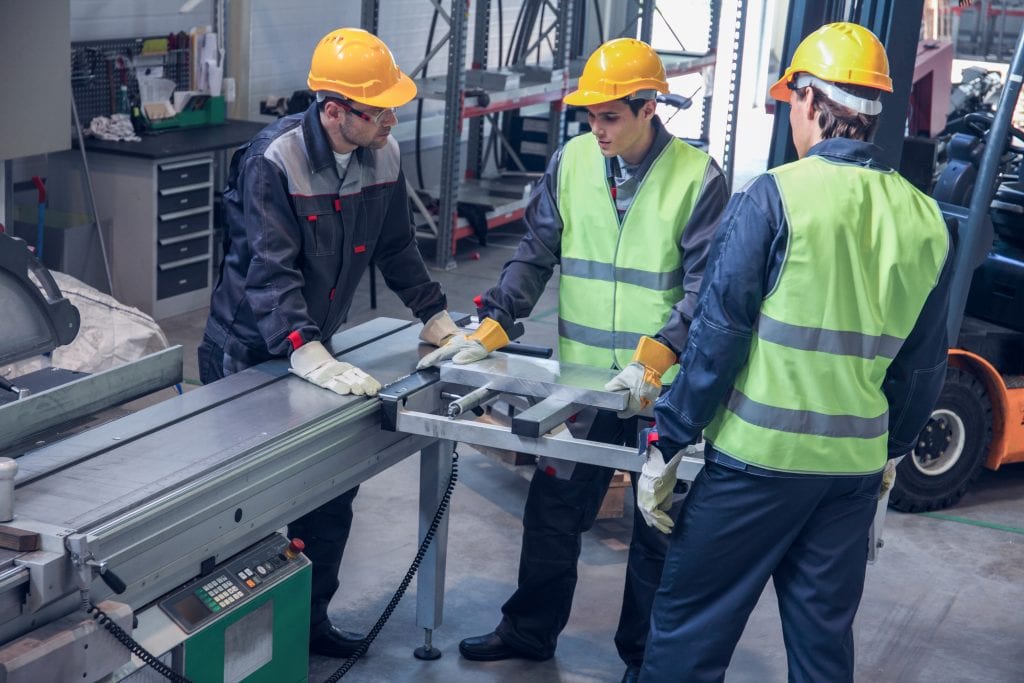
Makers of Things, this article is dedicated to you. In any production line, all stakeholders benefit from Overall Equipment Effectiveness (OEE). The ability to produce or receive high-quality parts and products at the lowest price, and the quickest turn-around should be a primary goal for all CNC operators.
From food service to rocket mechanics, your productivity hinges on the achievability of top OEE. At United Scientific, our CNC operators understand the ins and outs of overall equipment effectiveness. OEE is a metric we use to improve our efficiency regularly.
Join us as we break down the components of OEE and show you what to look for in a highly effective parts manufacturer. When only the best CNC collaborator will do for your product or part, United Scientific stands ready. Contact us today to discuss your precision cutting and part production project.
The moving parts of overall equipment effectiveness
One might think that quality or on-time delivery alone signals a high OEE score. In fact, there are three components to achieving top marks for OEE. They are:
- Availability
- Performance
- Quality
Let’s define those terms in depth.
Availability
The availability metric of OEE is a product of Planned Production Time, Planned Stops, and Unplanned Stops in production.
In other words, if your factory runs from 8 am to 5 pm Monday through Friday, a 100% Availability score means there are no stops in production during your open hours. A perfect availability score each day is not realistic.
Every production line will encounter equipment breakage or downtime, as well as material shortage from time to time. Other unplanned stops may involve staff shortages or other personnel issues while the line is scheduled to run.
Planned stops include regular equipment maintenance, cleaning, shift change over, process set-up, or something else. Though it would seem that unplanned stops affect the OEE availability the most, the truth is that planned stops have the largest negative impact on availability.
If your shop has inefficient maintenance schedules, long and lingering shift changes, or unclear set-up instructions for your shop floor team, these phenomena can drag down your availability score quickly.
Performance
The performance metric of OEE measures actual cycle time or run rate against ideal cycle time or run rate. In other words, if at our best we could complete a production cycle in 45 minutes, but instead only complete it in one hour, our performance metric would only be 75%.
Slow cycles and small stops contribute to a lower performance score. Whenever your line sits ready-but-idle, constitutes a small stop. Reduced speed on your production line defines a slow cycle.
Old equipment breaks or runs slowly. Machines have their quirks and must be reset. Lubrication runs out, and production materials come in different quality grades. Operators have varying levels of experience and expertise.
All of these “kinks†can slow production or stop it for just a few moments to enact a quick or routine “fix.â€
Since production equipment and personnel are fallible from time to time, small repairs or settings adjustments seem like a frustrating but normal part of manufacturing. Many shops become “blind†to these performance-suckers because they happen with such regularity.
However, when slow cycles and small stops pile up, those seemingly “routine†stoppages can have a disastrous effect on performance metrics. It’s smart to periodically evaluate your reasons for slow cycles and small stops so you can proactively reduce their frequency.
Quality
The quality measure of OEE has everything to do with finished product output. Any imperfect pieces that must be reworked or scrapped will bring down overall OEE.
If you’re striving for a 100% quality score, that means every part you machine must come out to acceptable selling quality. It’s nearly impossible to hit a 100% quality score consistently, as there will always be defective or rejected parts that can be reworked and sold in any project.
Making sense of OEE and setting realistic goals
Of course, any machining or production shop wants a 100% OEE score all the time, right? However, with three independent scoring factors, an A+ in OEE is likely the unicorn you’ll never capture.
A company’s OEE score is a product of Availability x Performance x Quality. Even if each criteria scores 85%, the composite OEE score comes out significantly lower than each individual marker.
On a positive note, improving even one of your OEE component scores will raise your overall OEE. As a company, you’ll likely have one score where you can truly be a rockstar when you apply conscious effort and sound strategy.
As a benchmark, an OEE score of 85% puts you in a world-class category. If you’re not close to that mark yet, consider setting realistic goals for incremental improvement.
For example, if you’ve noticed your shift changes lack a sense of urgency, consider rallying your shop floor team leads. Perhaps you can empower your team to innovate ways to help staff keep production lines running at top speed even as employees change locations on line.
What if the bottleneck in your production is an old and worn out cutter?
A strict budget for the short-term goal of replacing a cantankerous piece of equipment makes sense to increase OEE for long-term productivity.
Increasing OEE is a team effort
When your team knows and understands why OEE is essential to the company’s success and how they benefit from that, OEE scores may be easier to improve.
Gaining valuable input from operators as well as motivation from the top leadership down is essential in achieving and maintaining a high OEE score.
When you get serious about elevating your OEE score, be sure to include all stakeholders in goal setting and benchmarking for success.
Outsource your OEE with United Scientific
At United Scientific, we machine parts with superior precision for each client we serve. We partner with a wide variety of sectors, from automotive to medical devices, and many industries in between.
Contact us today and see how our attention to OEE in our parts production can work for your application.




